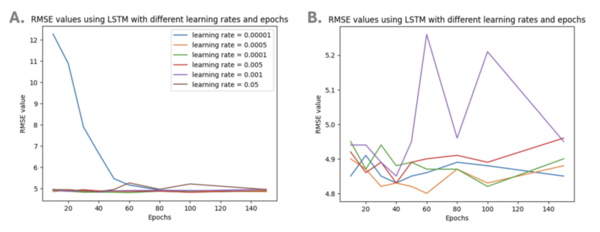Using Artificial Intelligence to Forecast Continuous Glucose Monitor(CGM) readings for Type One Diabetes
(1) Eastlake High School, (2) AIClub
https://doi.org/10.59720/23-291
Type One diabetes (T1D) is an incurable condition in which a person produces little to no insulin, leading to high glucose levels in the bloodstream. Advancements in technology have led to the development of Continuous Glucose Monitors (CGM), involving inserting a sensor under the skin that continuously measures glucose levels in the bloodstream. CGMs provide real-time data on glucose levels and patterns of fluctuation and have evolved as an essential part of diabetes management. Current CGMs cannot forecast glucose levels. In this study, we hypothesized that machine learning algorithms can be utilized to forecast glucose values using data provided by the CGM device. This could help T1D patients optimize medication timing, dietary adjustments, and physical activity to improve metabolic control and prevent T1D complications. Our study used publicly available data from a study that compared CGMs with and without routine blood glucose monitoring in adults with T1D. We used different AI models to provide 30-minute forecasts of blood glucose levels to show how model structure and parameters affect Root Mean Squared Error (RMSE), and whether the error can be reduced to 5% as per medical standards. Our research used RandomForest as a baseline algorithm and LSTM, a recurrent neural network. Our results demonstrated that the LSTM model achieved an error of under 5% in predicting future blood glucose levels. Hence, researchers can use LSTM models to enhance CGMs to aid T1D patients. The results of our study supported our hypothesis that AI can be used to predict glucose levels.
This article has been tagged with: